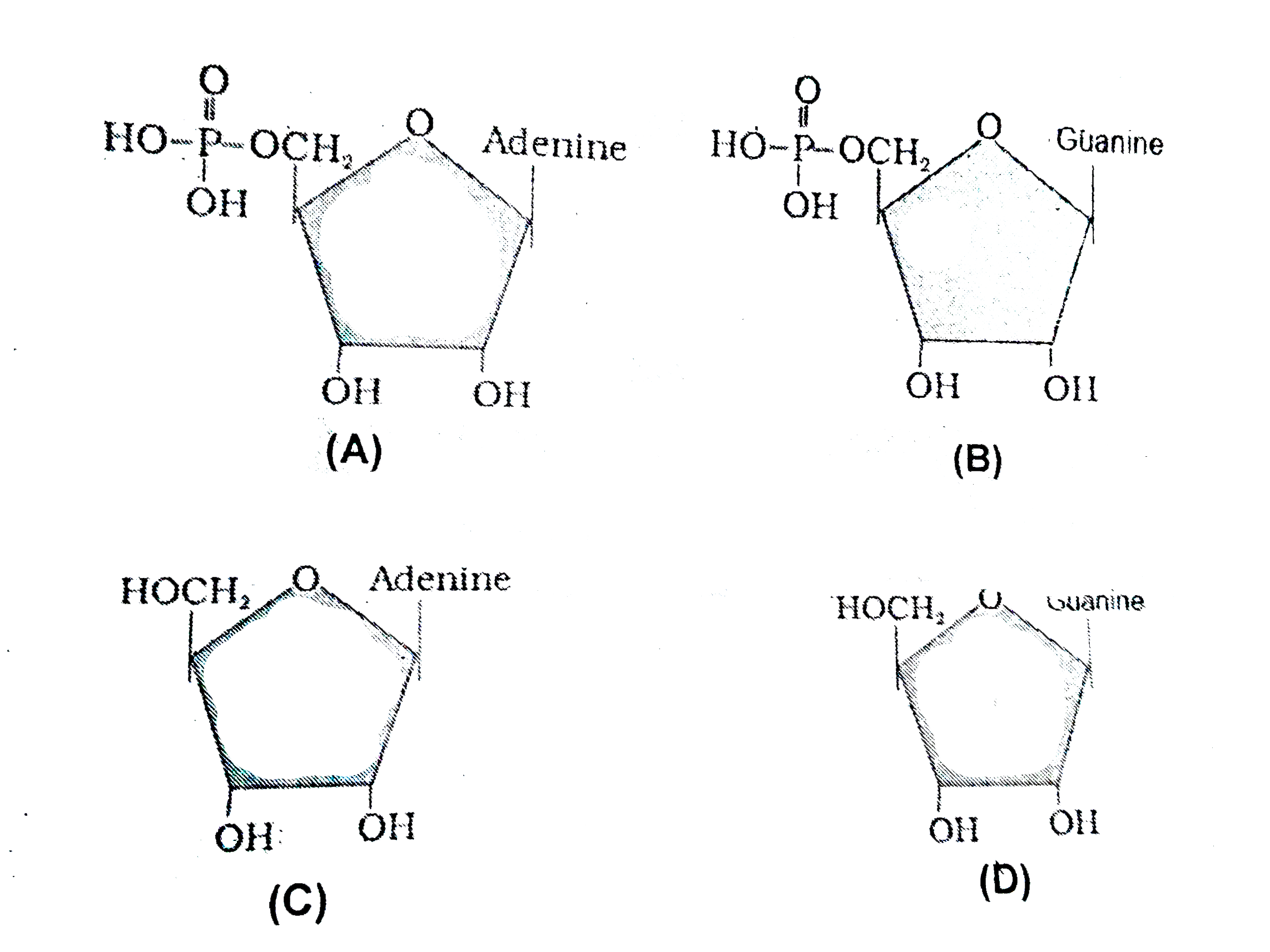A nucleoside differs from a nucleotide. It lacks the
base
sugar
phosphate group
hydroxyl group
The correct Answer is:c
To solve the question "A nucleoside differs from a nucleotide. It lacks the", we need to understand the structural differences between nucleosides and nucleotides.
1. Define Nucleosides and Nucleotides:
- A nucleoside consists of two components: a nitrogenous base (adenine, guanine, cytosine, thymine, or uracil) and a pentose sugar (ribose or deoxyribose).
- A nucleotide is similar to a nucleoside but includes an additional component: a phosphate group.
2. Identify Components:
- Both nucleosides and nucleotides contain:
- A nitrogenous base
- A pentose sugar
- The key difference is that nucleotides have a phosphate group attached to the sugar.
3. Analyze the Options:
- Base: Present in both nucleosides and nucleotides. (Incorrect)
- Sugar: Present in both nucleosides and nucleotides. (Incorrect)
- Phosphate group: Absent in nucleosides but present in nucleotides. (Correct)
- Hydroxyl group: Present in the sugar component of both nucleosides and nucleotides. (Incorrect)
4. Conclusion:
- The correct answer is that a nucleoside lacks the phosphate group, which is present in a nucleotide.
Final Answer:
A nucleoside differs from a nucleotide because it lacks the phosphate group.
---
- A nucleoside consists of two components: a nitrogenous base (adenine, guanine, cytosine, thymine, or uracil) and a pentose sugar (ribose or deoxyribose).
- A nucleotide is similar to a nucleoside but includes an additional component: a phosphate group.
- Both nucleosides and nucleotides contain:
- A nitrogenous base
- A pentose sugar
- The key difference is that nucleotides have a phosphate group attached to the sugar.
- Base: Present in both nucleosides and nucleotides. (Incorrect)
- Sugar: Present in both nucleosides and nucleotides. (Incorrect)
- Phosphate group: Absent in nucleosides but present in nucleotides. (Correct)
- Hydroxyl group: Present in the sugar component of both nucleosides and nucleotides. (Incorrect)
- The correct answer is that a nucleoside lacks the phosphate group, which is present in a nucleotide.
A nucleoside differs from a nucleotide because it lacks the phosphate group.
Topper's Solved these Questions
- NCERT Exemplar Questions +2 (MICROBES IN HUMAN WELFARE)BOOK - TRUEMEN BIOLOGY ENGLISHCHAPTER - NCERT Exemplar Questions +2 (MICROBES IN HUMAN WELFARE)EXERCISE - MCQs
19 Videos
- NCERT Exemplar Questions +2 (ORGANISMS AND POPULATIONS)BOOK - TRUEMEN BIOLOGY ENGLISHCHAPTER - NCERT Exemplar Questions +2 (ORGANISMS AND POPULATIONS)EXERCISE - MCQs
20 Videos
Similar Questions
Knowledge Check
Nucleotides
Acontain a sugar, a nitrogen-containing base, and a phosphate moleculeBare the monomers for fats and polysaccharidesCjoin together by covalent bonding between the basesDall of the above
A nucleoside is formed of
View SolutionA nucleotide is formed of
View SolutionNucleotides is
View SolutionWhich of these statements about protein synthesis are NOT correct ?
I. During transcription, mRNA synthesized from DNA nucleotides to have the same sequence of nucleotides as the DNA strand on which it was made.
II. During transcription , tRNA is synthesized from RNA nucleotides and carries codons that are complementary to the sequence of nucleotides on the DNA strand on which it was made.
III. During translation, mRNA is synthesized from RNA nucleotides to have the complementary sequence of nucleotides to that. Of the DNA strand on which it was made .
IV. During translation ribosomes move on mRNA from '5' and '3' one codon at a time .This is called translocation
View SolutionWhich two are nucleotides

View SolutionWhich one is a nucleotide ?
View SolutionWhat is a nucleoside?
View Solution
